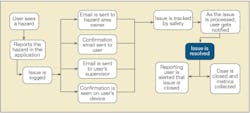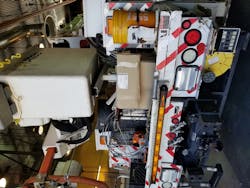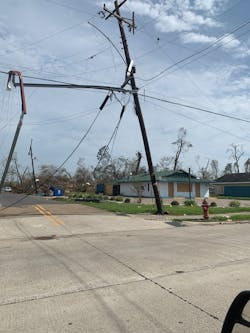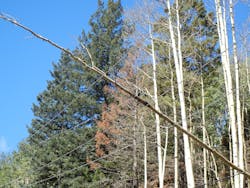PNM Resources' Plan to Add Mobile Reporting for Increased Safety
Most hours of work at an electric utility happen in the field, away from a desk and PC. For this reason, utilities should consider a mobile solution to report issues where they happen and when they happen.
PNM Resources, a mid-sized electric utility serving customers in New Mexico and Texas, currently uses a server-based safety management system (SMS) to manage incidents. As the SMS is used daily by many in PNMR’s workforce, the utility wanted to make a good solution even better by adding mobile functionality. In 2022, it kicked off Project Blue Snow to find a solution that could help it to prepare for the future of SMS reporting.
Refining Requirements
In looking at the concept of a mobile reporting solution, the project team talked to the utility’s various business operations about their needs and wants to determine requirements. This task ended up being quite challenging. Many people had trouble explaining what they wanted, as they were not used to being asked for their input but rather being told what they would get. Others offered many ideas about what should be done.
In addition, from a specific features standpoint, the project team identified these requirements:
- Geotagging — Make it possible to drop a tag to detail exactly where an issue is located, as many locations do not have a street address.
- Flexibility — Provide plenty of text space to capture notes and even the ability to dictate notes.
- Photos — Allow multiple photos to be added to a record and enable editing or marking up the photos within the application to better document the concern.
- Drop-Down Lists — Make the tool fast to use and the data consistent in reporting by providing preloaded drop-down choices, with the ability to add new values.
- Form Based — Provide preloaded forms with questions and information presented in a logical and consistent way.
- Easy to customize — Have the ability to design custom forms, with custom drop-down lists and workflows. PNM needs a system that nontechnical people can update and expand.
- Connectivity — Interface with email and potentially instant messaging applications, so updates can be shared quickly.
In addition to these features, the solution needed to be modular, so PNMR could do a phased implementation. This new project is a bit of an experiment, so costs are being monitored closely because the return on investment is speculative.
PNMR Plans
In its research, PNMR found mobile SMS is a growing marketplace. It used G2 to find and evaluate vendors. The utility found more than 100 vendors with solutions in this market space. Located all around the world, these vendors are at different levels of business maturity.
PNMR found that multiple vendors offer solutions that would meet many of its business needs, though the vendors often had different ways of solving those needs. The project team engaged in several demos and even had an opportunity to test generic applications on their mobile devices. This process enabled the utility to understand what it needs and what design choices ultimately would provide the optimal solution.
However, the utility is not in a position to replace its SMS solution today. Rather, it plans to start by deploying the mobile solution to do very specific tasks that cannot be done as effectively today. The utility’s long-term goal is to move to a single comprehensive SMS solution that includes support for remote users.
Reporting Hazards
PNMR’s first area of focus is improving the process to report hazards as they are found. Process improvements in this area will give the utility added visibility to a hazard in real time and better tracking for data analysis. For this effort, a hazard is defined as “any company-managed asset that has an increased level of risk to cause damage to health, life, property or any other interest of value.” A company-managed asset includes utility poles, company locations, vehicles and transmission equipment, for example. By proactively addressing hazards, PNMR hopes to increase awareness of workplace hazards and, ultimately, create a safer workplace and community.
A Few Challenges
Change is hard and the project team recognizes there are a few challenges with this solution.
For one, the utility has a mature workforce, and changing a process is not a simple matter. The project team has numerous ideas to get employees interested in the new application, but the team does expect younger workers to adopt the technology more quickly.
Interfaces to HR for employee access management and the email solution must be built and tested. Fortunately, the utility’s IT team has cloud experience in this area.
Another challenge the project team must overcome is employee resistance to adding a company application on personal devices (about 50% of employees have company-owned devices). The project team cannot force users to install the app, so it is planning a promotion of incentives to get employees excited. While not monetary, small gifts have proven highly successful in getting the business engaged. Finally, potential union contract issues are a possibility. Any time work processes change, existing union agreements must be reviewed and potentially revised.
Despite these challenges, PNMR recognizes the need to prepare for the future and believes a mobile solution is critical to its continued success. Focusing on a subset of the SMS solution enables the utility to learn the solution at a reduced cost and risk. This approach is important because PNMR, as a regulated utility, monitors its costs carefully.
Building an Understanding
Today’s workforce uses cell phones in all aspects of their lives. PNMR sees incorporating a mobile reporting solution as a way to take advantage of this reality. Mobile use continues to grow. As with customers who expect to be able to access their account and do other tasks on a mobile device, employee demand for mobile functionality in utility operations will continue to grow.
PNMR has a major grid modernization program underway, so it needs to adapt its Safety department to a changing, distributed way of serving customers. Supporting the mobile application is one way Safety is making this transition.
By focusing first on hazard reporting, this allows time for the project team to identify challenges that will need to be addressed with a full replacement. PNMR did an SMS replacement several years ago that was not well received, so it will need to do a better job the next time.
In addition, the utility will continue to build an understanding of mobile safety solutions and what it truly needs. Employees are talking more and more about digital tailboards and incident reporting. The utility must be able to support these kinds of changes, and the hazard reporting module is a good first step.
Nels Hoenig ([email protected]), PMP, CMQ/OE, is a senior safety data analyst and has been with PNM Resources for 12 years. Prior to being in safety, Hoenig worked in software design, development and quality assurance. His passion is supporting user needs by using out-of-the-box thinking. He has extensive experience in data analytics, project management and software quality. Hoenig is certified in data analytics, project management and organizational management.
For More Information
G2 | www.G2.com
About the Author
Nels Hoenig
Nels Hoenig ([email protected]), PMP, CMQ/OE, is a senior safety data analyst and has been with PNM Resources for 12 years. Prior to being in safety, Hoenig worked in software design, development and quality assurance. His passion is supporting user needs by using out-of-the-box thinking. He has extensive experience in data analytics, project management and software quality. Hoenig is certified in data analytics, project management and organizational management.




